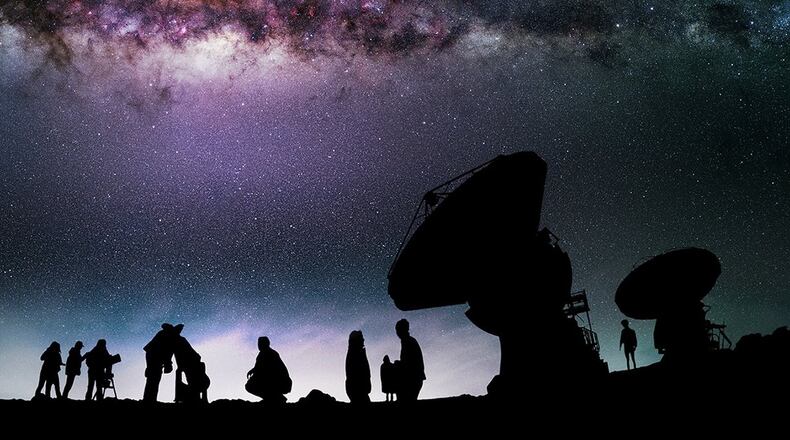EVENT PREVIEW
"The Search for Life in Space" is a family-friendly, short film with a run time of 32 minutes. It opens Friday and runs through Feb. 2. The film will also show Friday evenings during Martinis & Imax through Nov. 18. See website for showtimes. $13 for adults, $12 for seniors, $11 for children and $8 for museum members. 767 Clifton Road, N.E., Atlanta. 404-929-6300, www.fernbankmuseum.org.
“Out of This World Day” activities will take place 10 a.m.-2 p.m. Saturday. Free with admission to museum ($16-$18 for ages 3 and up; free for children 2 and under.) Note: Events are free for those with museum memberships.
With stunning new images from the surface of Mars to the icy moons of Jupiter and Saturn and close-up views of life in extreme environments here on Earth, a new Imax film at the Fernbank Museum of Natural History asks the fundamental question: "Is there life elsewhere beyond Earth?"
"The Search for Life in Space," which opens Friday, delves into what scientists know about life in the cosmos and what they are looking for with the world's most powerful telescopes on the sky.
The Fernbank Museum will mark the opening weekend of this new Imax film by hosting “Out of This World Day” 10 a.m.-2 p.m. Saturday with several activities including the following:
- Using special telescopes, explore the sun with local astronomer Stephen Ramsden.
- Join the Georgia Institute of Technology Ramblin' Rocket Club to create and launch your own paper rocket.
- Test your star knowledge using constellation tubes.
All “Out of This World Day” activities are included with museum admission and are free for members. Note: Some of the activities are weather permitting.
The family-friendly film, which is just over 30 minutes, showcases a relatively new science called astrobiology, which not only confirms that the universe is teeming with thousands of newly discovered planets, but also looks at how some planets may have potential to sustain life.
By using the most current, real-life footage of what is “out there” — from landscapes of planets and moons in our own solar system to far-away stellar nurseries, captured by the powerful telescopes and projected onto the world’s tallest screens — “The Search for Life in Space” makes the case that we are closer than ever before to finding out whether we on Earth are alone in the greater universe.
The film also features giant-screen footage taken from extreme lava fields in Hawaii and thermal vents deep beneath the Pacific Ocean and looks at what these extreme places can tell us about the potential for life in the harsh environments of space. The film runs through Feb. 2.
The film is based on the work of Lisa Kaltenegger, the founder and director of the Carl Sagan Institute at Cornell University. She is also the star of documentary. She focuses on "exoplanets," which are planets that orbit a star, as Earth orbits the sun.
Kaltenegger is known for establishing an innovative way to rank the potential of life on other planets and moons. She’s learned that the chemical makeup of the air — oxygen, water, methane — gives off a unique “spectral signature” when light penetrates atmospheres above them. She’s created an “Alien ID Chart for life,” a catalog of the various spectral signatures, so that scientists can spend more time evaluating worlds that look the most like Earth.
She reflects on the differences between what her hero, astronomer Carl Sagan, could only imagine and the cutting-edge results of current searches.
More than 20 years ago, she says, we didn’t even have the technology to find out if there were planets orbiting other stars like our own, the sun, in the galaxy. But now we do, she says, and locating the ones that can support life puts us one step closer to exploring “the fascinating diversity of potential life out there.”
About the Author
Keep Reading
The Latest
Featured



